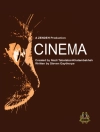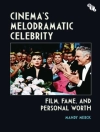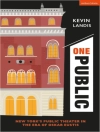Written from an international perspective, this account of the origins of the cinema begins in 1833 with the introduction of optical toys for reproducing movement and ends with a thorough examination of the first full year of projected moving pictures in 1896. Comprehensive and verifiable, with citations that support each individual entry, the book examines the events that culminated in the establishment of the moving picture world that was the dominant visual medium of the last century. Drawing on a range of international sources, this chronology is a readable, vivid account that corrects many longstanding errors in the story of moving pictures while at the same time recording the astounding diversity of ideas, apparatus, personalities, and exhibitions that turned a passing novelty into a major industry. Populated by dreamers, inventors, scientists, and entrepreneurs with widely different skills, interests, and backgrounds, the many origins of the cinema are all recorded here in a rich tapestry that has been woven with attention to the detailed shape and placement of each individual thread. The result is a fully- indexed reference that reflects the state of modern scholarship and should be useful over the long term as both a reference to the period of early cinema and as a starting point for further research.
Cuprins
Introduction
Acknowledgements
PART 1: Chronology
PART 2: Citations to Dates
PART 3: Bibliography
PART 4: Index
Despre autor
Deac Rossell began as a film critic in Boston, and then worked at the Museum of Fine Arts, Boston; the Directors Guild of America, Los Angeles; the National Film Theatre, London; and Goldsmiths College, University of London. He has written frequently for encyclopaedias, exhibition catalogues, and academic journals, and is the author of Living Pictures. The Origins of the Movies; Faszination der Bewegung: Ottomar Anschütz zwischen Photographie und Kino; and Laterna Magica – Magic Lantern. A History – Eine Geschichte.












